MQ-9 Reapers Were Ready To Blow Up A Rocket Booster Off California
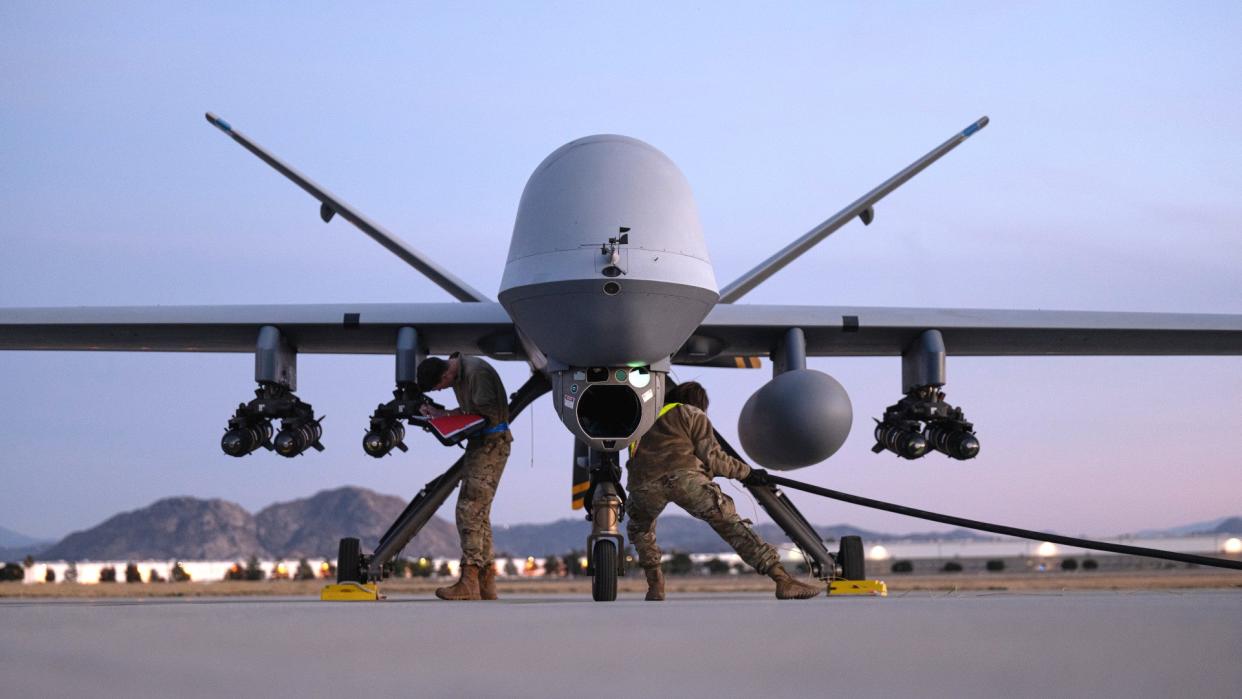
Air National Guard MQ-9 Reaper drones were armed and ready, if they had been required, to sink a rocket booster off the coast of California as part of a missile defense test last month. The Reapers were ostensibly on station to help ensure the booster, which was from a Ground-Based Interceptor, slipped beneath the waves and did not become a hazard to maritime traffic.
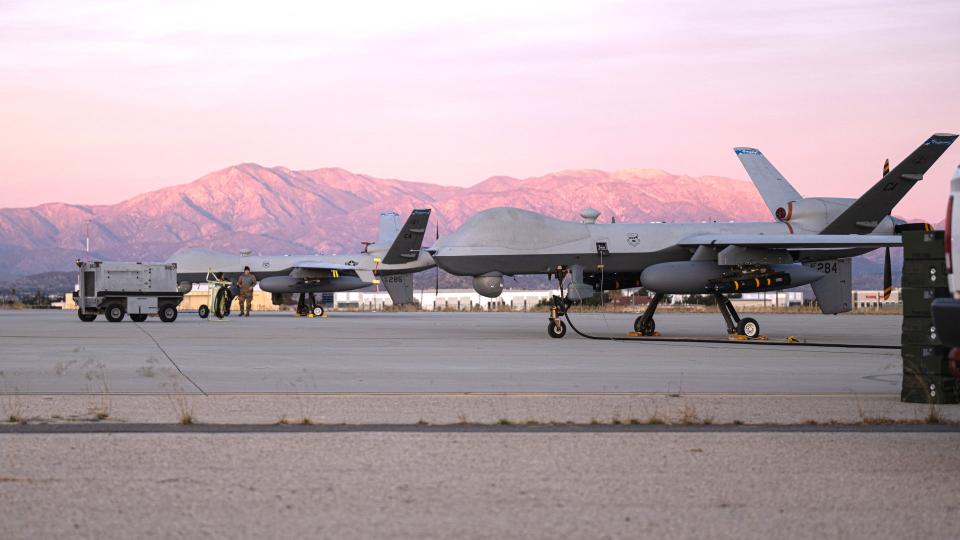
The California Air National Guard's 163rd Attack Wing has confirmed its unusual participation in the Missile Defense Agency's (MDA) Flight Test Ground-based Midcourse Defense 12 (FTG-12) test on December 11, 2023, to The War Zone. FTG-12 saw an improved version of the Ground-Based Interceptor (GBI) launched from Vandenberg Space Force Base in California successfully take-down an intermediate-range ballistic missile (IRBM) target equipped with countermeasures. You can read more about FTG-12 and its core objectives here.
https://www.youtube.com/watch?v=kxRDK2SYSlg
“Two MQ-9s were present to observe the rocket booster’s reentry into the working area and watched it land in the water and quickly sink thereafter. Both aircraft were positioned in opposite sectors to ensure adequate viewpoints from all angles and were able to capture the entire flight path and landing spot of the rocket booster," Maj. Shanna Ream, one of the drone pilots who took part in the mission, told The War Zone. "The requirement from MDA was to observe the sinking of the booster and, if it did not, to use weapons to ensure that it sunk."
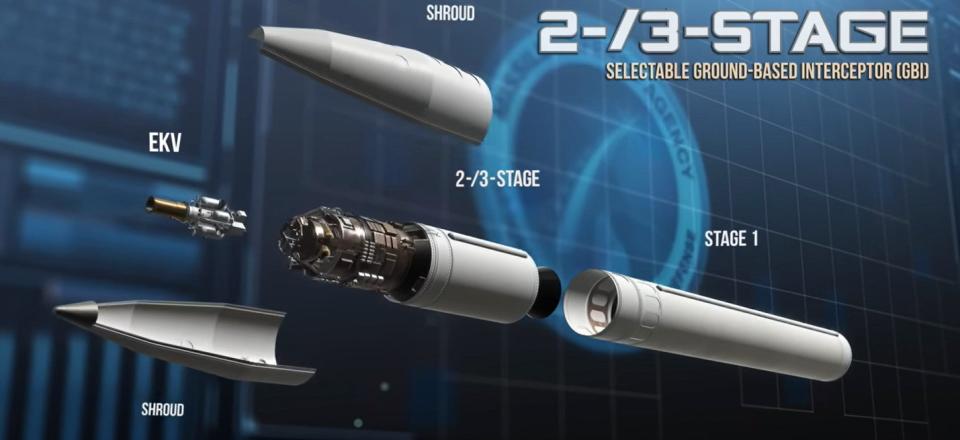
The California Air National Guard has released pictures showing laser-guided AGM-114R Hellfire missiles being loaded onto one of the 163rd's MQ-9s at March Air Reserve Base in California prior to the drones launching in support of FTG-12. March, where the 163rd is based, is situated some 195 miles southeast of Vandenberg. Where exactly the booster came down in the Pacific is unknown.
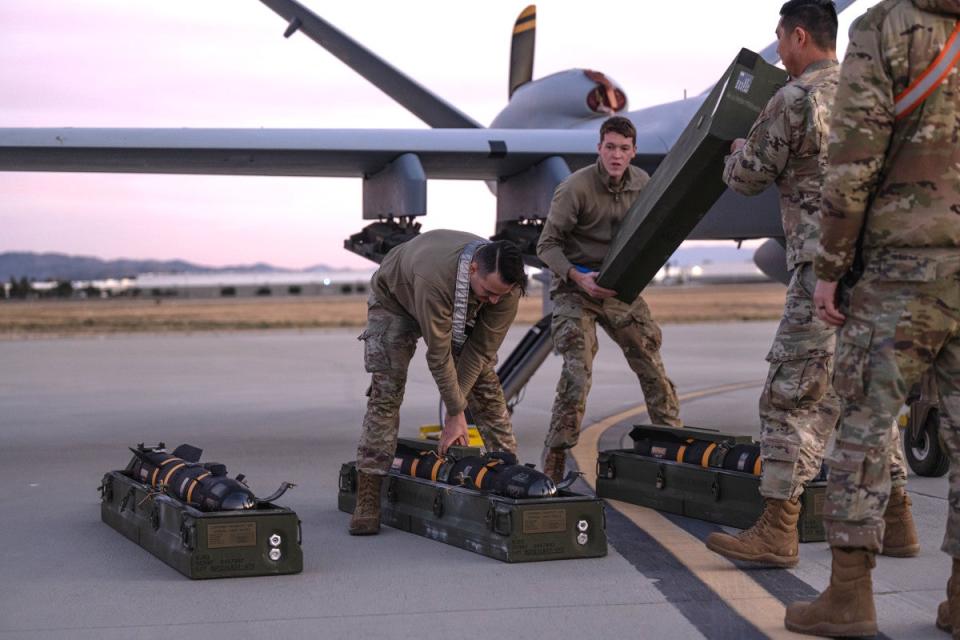
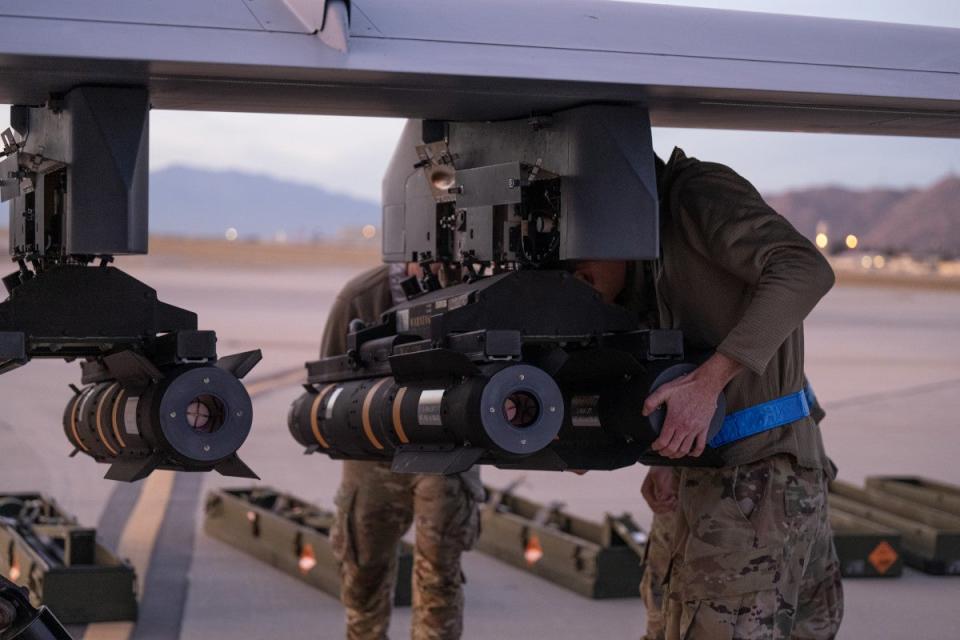
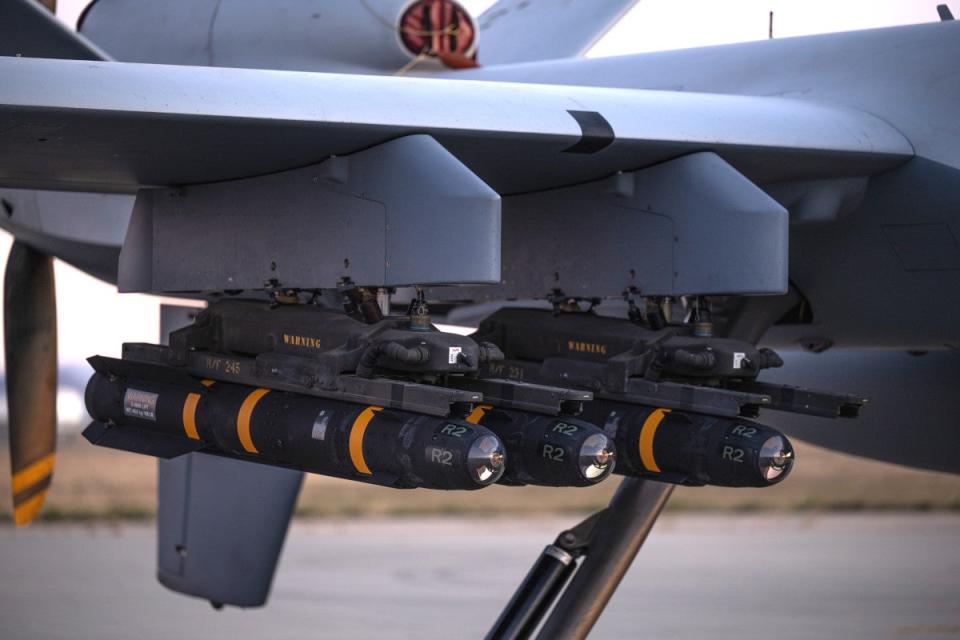
In the end, "our aircraft did not need to fire any weapons to ensure the rocket booster sunk. It was not necessary because the rocket booster was assessed by MDA and observing MQ-9s to have sunk on its own," Maj. Ream added. "The aircraft utilized multi-spectral targeting systems and synthetic aperture radar to provide accurate assessments of the booster's position and disposal."
The standard sensor fit on MQ-9s includes a Raytheon MTS-B sensor turret and a General Atomics Lynx radar. The MTS-B turret has a mix of electro-optical and infrared cameras, as well as a laser target designator that also has laser rangefinder and laser spot marker functionality. Lynx is a multi-mode radar with synthetic aperture imaging, ground moving target indicator, and maritime search capabilities. All of these capabilities would have come in useful for tracking GBI booster after its launch from Vandenberg and following its subsequent impact in the Pacific off the California.
https://www.youtube.com/watch?v=QugrRRxirC0
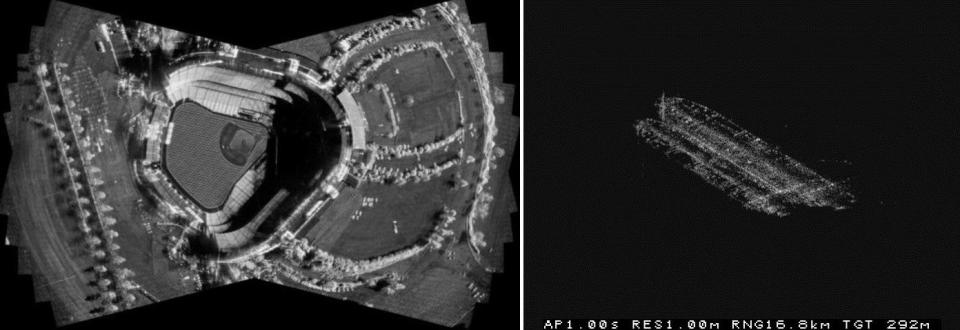
"This was the first-ever mission opportunity for the MQ-9 community working with MDA on a rocket booster disposal," according to Maj. Ream.
That armed Reapers were deployed in this role at all is interesting. Back in 2018, there was a report that the U.S. Air Force had helped sink a SpaceX Falcon 9 booster after it ended up in the Atlantic Ocean following a launch from what is now Cape Canaveral Space Force Station in Florida. At the time, The War Zone highlighted how the booster could present a hazard to maritime traffic and that sinking it could have provide a valuable over-water live-fire training mission for one or more Air Force units.
SpaceX later denied any Air Force involvement in the incident and said the booster broke up and sunk before it could be towed back to shore. A subsequent unconfirmed report said that, while the Air Force had been considered for the job, SpaceX had ultimately hired a private contractor to intentionally blow up the booster at sea.
Still, The War Zone's previous point stands and 163rd's actual support for MDA's FTG-12 test last month can only have provided at least some useful experience in tracking targets at sea and being prepared to engage them. Back in 2015, the Air Force demonstrated the ability of an MQ-9 to destroy a boat at sea with a Hellfire for the first time.
More recently, the U.S. military been exploring expanding the use of MQ-9s in maritime roles, including in support of anti-submarine operations. This is part of broader explorations of how non-stealthy Reapers might be able to contribute in future high-end conflicts, with a particular eye toward a potential large scale fight in the Pacific against China.
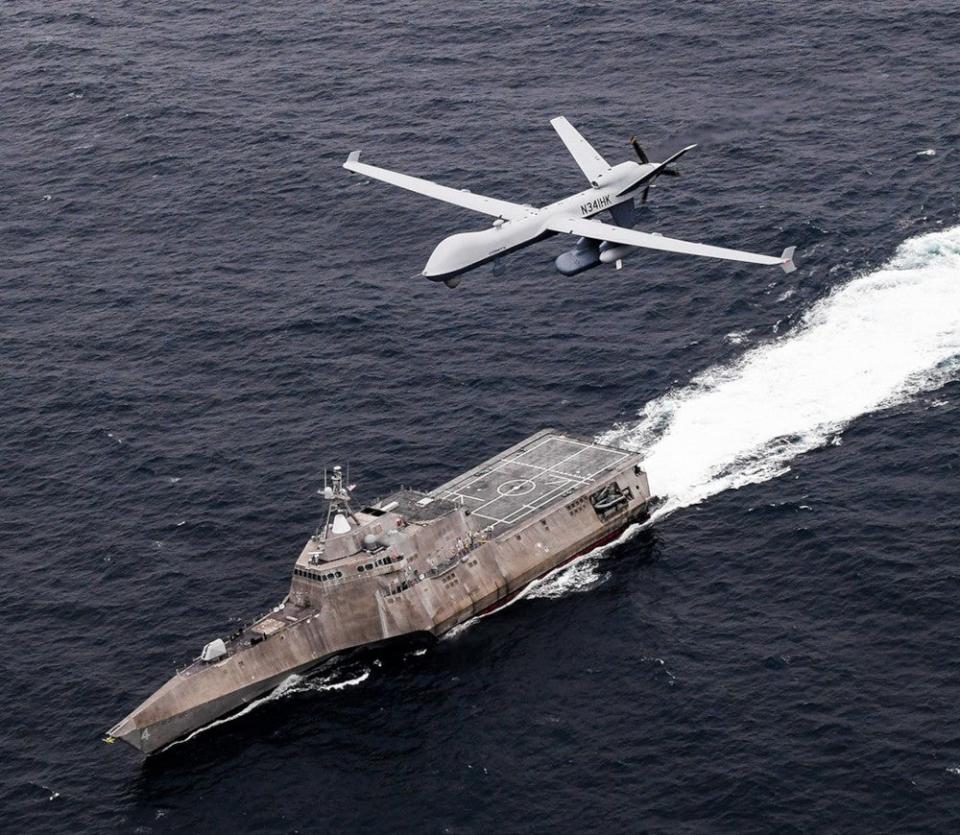
Depending on exactly where the GBI booster came down, the 163rd's support to FTG-12 could have also helped with ensuring that malign foreign actors, like the Chinese or Russian governments, couldn't recover it or that there is nothing useful to glean if they did. As noted, the California Air National Guard's Reapers "provide[d] accurate assessments of the booster's position and disposal," even though they didn't fire any Hellfire missiles at it in the end.
GBI is the interceptor component of the Ground-based Midcourse Defense (GMD) system, the U.S. military's highest-end missile defense system. Information about GMD would be of great interest to America's strategic competitors and other adversaries.
If nothing else, it will be interesting to see whether or not being on call to blow up rocket boosters or other materiel at sea after missile tests becomes a routine tasking for Air Force Reapers.
Contact the author: joe@thedrive.com

